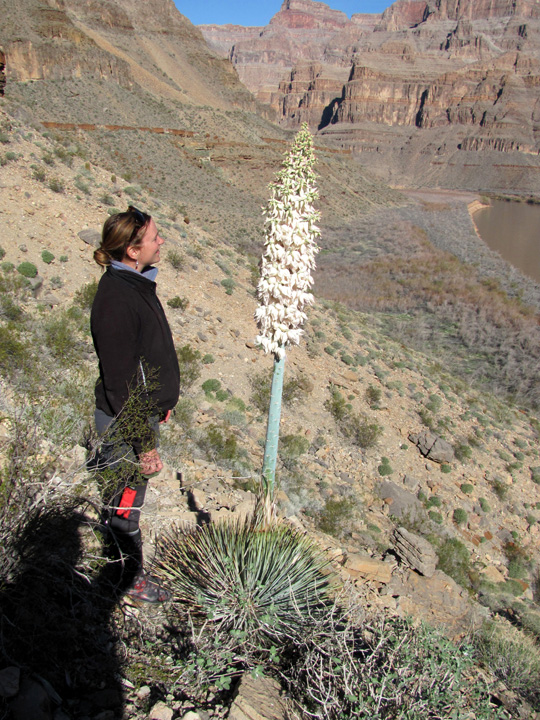
|
Family: Asparagaceae |
Plants simple or cespitose, erect, acaulescent, scapose, rosulate, monocarpic or polycarpic; rosettes solitary or in colonies. Leaf blades linear, rarely narrowly lanceolate, widest at base, tapering to apex, glaucous, somewhat flexible when young, rigid at maturity, margins pale yellow, mostly denticulate, corneous, apex distinctly spinose. Scape well developed, extending beyond rosettes, usually more than 2.5 cm in diam., glabrous. Inflorescences paniculate, cylindrical, bracteate, glabrous; rachis and peduncle reddish purple; bracts reflexed, deltate, abruptly narrowing to linear, sharp-pointed apex. Flowers bisexual; perianth campanulate or globose; tepals distinct, white or creamy white to greenish or purple-tinged, broadly lanceolate, 3.2-4.5(-6) cm; filaments ca. 1.3 cm, equal to or longer than pistil, papillose; anthers reniform; pistil 1-1.3 × 0.6-1 cm; ovary superior; style white, 2-3 mm; stigmas green, capitate. Fruits erect, capsular, obovoid, 3-5 × 1.5-4 cm, dehiscence loculicidal. Seeds many per locule, dull black, thin, flattened, 6-8 mm diam. x = 30. DNA evidence (M. A. Hanson 1993; D. J. Bogler 1994; K. H. Clary 1997) supports W. Trelease´s (1893) recognition of Hesperoyucca at the genus level and reinforces S. D. McKelvey´s (1938-1947, vol. 2) statement that several characteristics of Hesperoyucca whipplei are not typical of Yucca and could justify its removal from Yucca. J. M. Webber (1953) believed that the differences in leaf, inflorescence, and capsule that McKelvey used to separate Hesperoyucca newberryi from H. whipplei are weak and within the normal ranges of variation in the latter species. F. Hochstätter (2000) treated H. newberryi as a subspecies of H. whipplei. DNA evidence (K. H. Clary 1997) supports specific status for H. newberryi, H. whipplei, and a third species from Mexico, H. peninsularis (McKelvey) Clary. Conclusive DNA analyses have not been performed on the proposed varieties and subspecies of H. whipplei (K. H. Clary 2001), nor has there been any recent systematic morphological work that would support those earlier proposals. For these reasons, only the species of Hesperoyucca are described. This treatment follows S. D. McKelvey´s and K. H. Clary´s interpretations.
|
This project was made possible in part by the Institute of Museum and Library Services [MG-70-19-0057-19].
Powered by Symbiota



